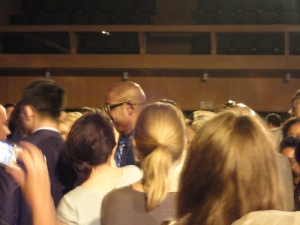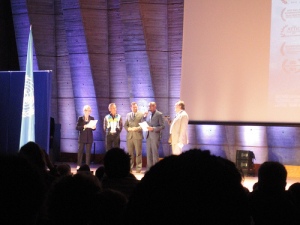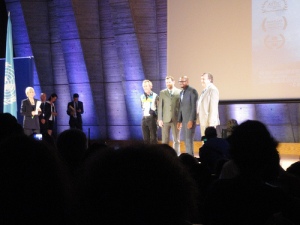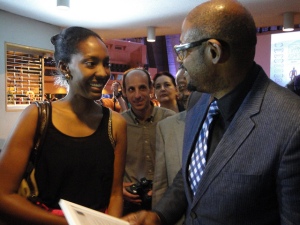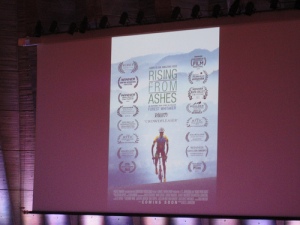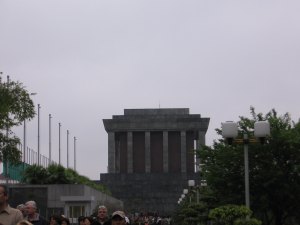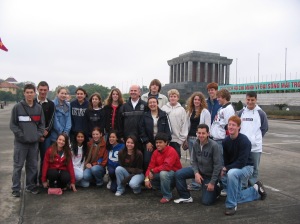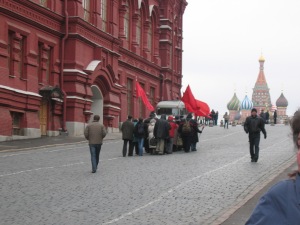Is your TEFL ticket past its sell-by date?
 Excuse me, love, do you have any bangers and mash?
Excuse me, love, do you have any bangers and mash?
Travel, travel and more travel – that’s what everybody would like to do, if only they had the time and the money. “See the world, lad, before you settle down”, my grandad used to say. Of course, he was right. There is nothing like travel for seeing how the other half live, delving into exotic cultures and then realising the limitations of your own. For some of us, travel can be addictive. We soon get bored with the easy life at home and yearn for adventure. When the travel bug gets serious, we want to throw off our tourist garb and settle somewhere for a while, learn the lingo, fall in love, submerge ourselves. But how to earn an honest crust?
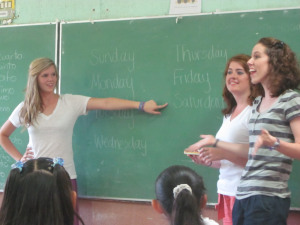 Teaching English abroad is bags of fun when you’re young…
Teaching English abroad is bags of fun when you’re young…
Well, if you are lucky enough to be a…
View original post 1,049 more words
My goodness, it seems to be a read-aloud…
Body Language: An Artistic Writing Tool
Excellent resource for you creative writers out there.
By Sharla Rae
Have you ever people-watched and tried to guess by facial expressions and body movements what people are feeling or thinking?
This non-verbal communication of emotion, state of mind or state of physical well-being is known as body language.
Body Language is one of the most artistic and useful tools in the writing craft.
The art:
Writers paint word visuals of a character’s movements in the reader’s mind and this art is crucial in making our characters look and act like real people rather than stick characters moving around on the page.
The tools:
I demonstrated how to use body language as a tool to eliminate clunky saidisms in my blog, “Dialogue Tags: How To Kill Some Of The Little Buggers,– showing who’s speaking rather than telling.
Body language may also be used to set the tone or atmosphere in a scene. Example: A character…
View original post 2,362 more words
Where are you from?
Well spoken!
How many times have you had that question? I think this topic has been done again and again. But I think the reason that it’s been covered so many times by third culture kids and global nomads is because it happens so frequently in our lives, and it always takes us 20 times longer to answer the question than anyone else. And we either feel uncomfortable or arrogant in answering the question.
I think we (TCKs) all have that little 1 minute speech memorized by now. I don’t know about you, but I’m constantly trying to shorten it. Because I just always feel that it sounds so pompous: “My dad is French; my mom is Belgian. But I’ve never lived in either of those countries. I was born in Tokyo, moved to Dusseldorf, Johannesburg, Vienna, Hamburg and then did my undergrad in the US.” And I have no desire to…
View original post 513 more words
Do keep in touch…
This resonated so much with me. Reblog this if you are or once was an expatriate or if you have simply known people in your life that you might never see again.
Marcel Proust once quipped: “friends are for cowards”. Not so, you might say. But I think he had a point. Sociable people who plan their lives around a group of close friends do not really possess the adventurous spirit; they tend to stay in one place and neither have the courage nor the desire to take off alone around the world and make a new life. They are homebirds. Often I envy them.
But if, like me, you have spent most of your life moving around, the friends you make along the journey are only temporary. For the traveller, this is a kind of tragedy: most of the people you meet and grow to like, or love, you never get to see again, and some you miss for the rest of your life. As you get older the past becomes a vast dark space, filled with faces you once knew…
View original post 558 more words
François Hollande Official Visit to UNESCO
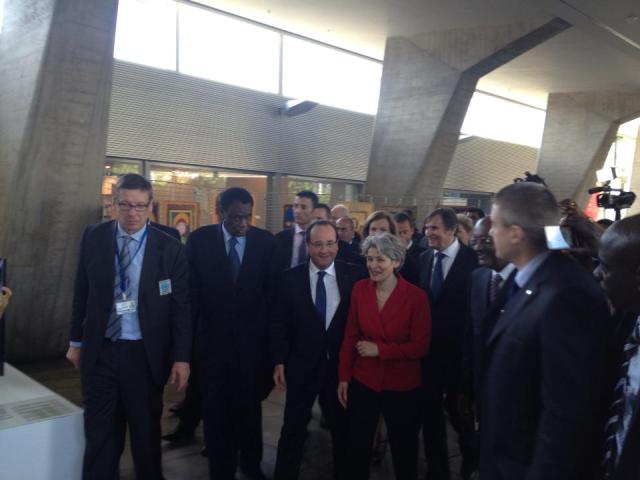
French President François Hollande with UNESCO Director General Irina Bokova at UNESCO. President Hollande arrived on June 5th to claim the Felix Houphouet-Boigny Peace Prize awarded by UNESCO every year to honour those who contribute to peace and stability. He was awarded the prize for the French military intervention in Mali and was accompanied by several African heads of state, including Dioncounda Traore, then president of Mali.
Photo by Diogo Amaro, used with permission
A Messenger of Hope Raises Hope from the Ashes
My internship at UNESCO brought me face to face with many colourful characters and people of many nationalities and backgrounds, some not unlike my own. But out of all the people I thought I’d meet during my stay, Forrest Whitaker was not one of them.
The US actor brought Africa to the screen as Idi Amin in The Last King of Scotland. This time, he brought Rwanda back to the limelight with an advanced screening of his documentary Rising from the Ashes. As a UNESCO Goodwill Ambassador, Whitaker allowed UNESCO staff, interns and visitors the chance to see an advance screening of the film, which he narrated and produced, before it hits French cinemas.
Set in Rwanda and spanning three continents, the movie tells the story of the first Rwandan national cycling team and its rise to fame under the guidance of Jonathan “Jacques” Boyer, the first American to compete in the Tour de France. Composed of genocide survivors, the men form an indestructible companionship as they compete in Rwanda, South Africa, the United States and finally in London for the 2012 Olympic Games. Boyer himself appeared alongside Whitaker on stage to present the film to the audience.
The film takes you from tears to laughter and back again as the stories of Boyer and the cyclists are revealed. The losses and misfortunes of the main characters will bring tears to your eyes while their triumphs will brighten your mood just as quickly. Most strikingly, it is an example of how the love of sport and a spirit of sportsmanship can be powerful enough to break down all the self-imposed barriers that we build up based on prejudices, resentment, apathy and cynicism. It tells about how the scars left behind by violence and hatred need not bleed forever. As a UN agency specialised in fostering cultural and educational cooperation in the aim of sustaining peace, Rising from the Ashes gives a concrete example of how UNESCO’s mission may be possible.
For more information on the film, click here
A Most Memorable 21st
Your 21st birthday can mean different things to different people. In the United States, it’s the day you can finally celebrate their guilt free sip of alcohol. in the rest of the world, you’d certainly be old enough to drive, vote, and work. In my case, it was a birthday to remember.
My parents and sisters both wished me a happy birthday. So did my brother and his family by phone. As I sat down to see what messages I received on my birthday, one particular email caught my eye:
Good morning, Skander.
Many thanks, once again, for submitting your short stories for consideration to the upcoming charity Horror Anthology, Fear. We have received a very high standard of submission over the last month, and I am delighted to offer you a contract for their publication in the Anthology, which I attach to this email. I would hope that the details are clear, but please don’t hesitate to email me if you have any questions related to it.In brief, by signing the contract you provide us with the exclusive rights to publish your short stories in the Anthology for twelve months (from publication date). You agree that, after twelve months, we have indefinite non-exclusive rights to publish your short stories, in that you are free to seek their publication with additional sources. As you will know, all net royalties, received by us from the distributors (Amazon, Smashwords, Createspace, and so on), will be paid to charity.
Dear Laurence,
I’m not sure I understand correctly. Does this mean that you would like to publish one of my short stories in the magazine? Please let me know. Thank you very much.
Good evening, Skander.
Yes, that’s correct. We have attached two contracts to our previous email – one for each story.Kind Regards,Laurence
This wasn’t the first anthology I submitted my work to. Previously, one of my short stories was short-listed to appear in a similar book called Deviant Nightmares which was a horror anthology made up of stories and artwork by writers and artists of the online community deviantART. Even though the person responsible for compiling the stories personally liked my submission, there must have been others far more talented.
Two years later, a group I joined on deviantART called The Written Revolution advertised the opportunity to be published by Crooked Cat Publishing, an independent publisher based in the UK. It was calling for submissions from writers. Any opportunity was good enough for me at the time, so I submitted my stories “The Wild Huntsman” and “The Nightmare Queen”, both written around 2010 and having gone through very minimal editing at first.
I never once expected that anything would come of it.
The anthology, called FEAR, was published on October 3rd, 2012 and is still available on Amazon and Smashwords.
My 21st birthday was more than one more year in my life. It was a milestone. I had heard the same thing over and over again that persistence was the key for any aspiring author. And now, I know it’s true.
Two Famous Stiffs
I remember an old friend from High School telling me that he had seen a dead body while he was living in Yemen. He asked me at the time if I had ever seen a dead body before.
It happens that I have seen two in my life. Two dead bodies that belonged to two famous revolutionaries.
March 2006:
I’m with my tour group and the tour guide, David Eales in the centre of Ba Dinh Square. It was here that Ho Chi Minh, then leader of the Vietminh, read the Proclamation of Independence of the Democratic Republic of Vietnam on September 2, 1945 believing it to be the opportunity for Vietnam to declare independence from France. This officially led to the creation of North Vietnam at the end of World War II.
The rules are strict. No digital cameras or camcorders are allowed in the mausoleum. Same with food and drink. Visitors have to form two straight lines and observe a dress code. No shorts or miniskirts are allowed and arms must be kept straight with hands out of one’s pockets.
The lines shamble along, doing with their eyes what cameras and video cameras would have done in an instant. A military honour guard stands watch over the glass case, dimly illuminated by white lights. From nine in the morning to midday, the embalmed body is available for viewing to the public. The rest of the time, the mausoleum is closed in order to maintain the preservation of the former leader’s body.
It’s a macabre sight at the best of times. What makes it worse is that Ho Chi Minh didn’t want it to happen. According to historians, he wanted to be cremated, his ashes spread across the north, south and centre of the country. A grand mausoleum was considered a waste of arable land to him.
The mausoleum is inspired by Lenin’s own resting place in Moscow’s Red Square. Unbeknownst to me, I will have the opportunity to see him as well in the near future.
March 2007:
The air of March is perfectly tolerable for the average Russian. For a group of students who just came from Cairo, it feels good to be bundled up. Our guide Michael takes us to Red Square where the tomb of Vladimir Ilyich Lenin continues to draw tourists and remnants of the Communist Party in Russia.
Just like Ho Chi Minh’s tomb, it is forbidden to take photos or record the moment on video. Everyone marches in single file around the glass case where the revolutionary lies to this day. He lies on his back with his black suit still on him. Despite all the rumours that his corpse was replaced by a wax dummy, I still dread the moment where his eyes open. I’ve got one foot in a reverie and another on the floor of a darkened room where the same man who created the Soviet Union has been lying in state ever since he died, years before anyone in the room was born. But I can’t stay in my head for too long with the guards ushering us out of the building.
The daylight brings us back to the world of the living once more.
It’s been about five to six years since I last saw them. But one thing is for sure. I can say with certainty that I’ve seen a dead body in real life. And not just anyone’s body.
As far as bragging rights go, I’m not sure how to feel.
